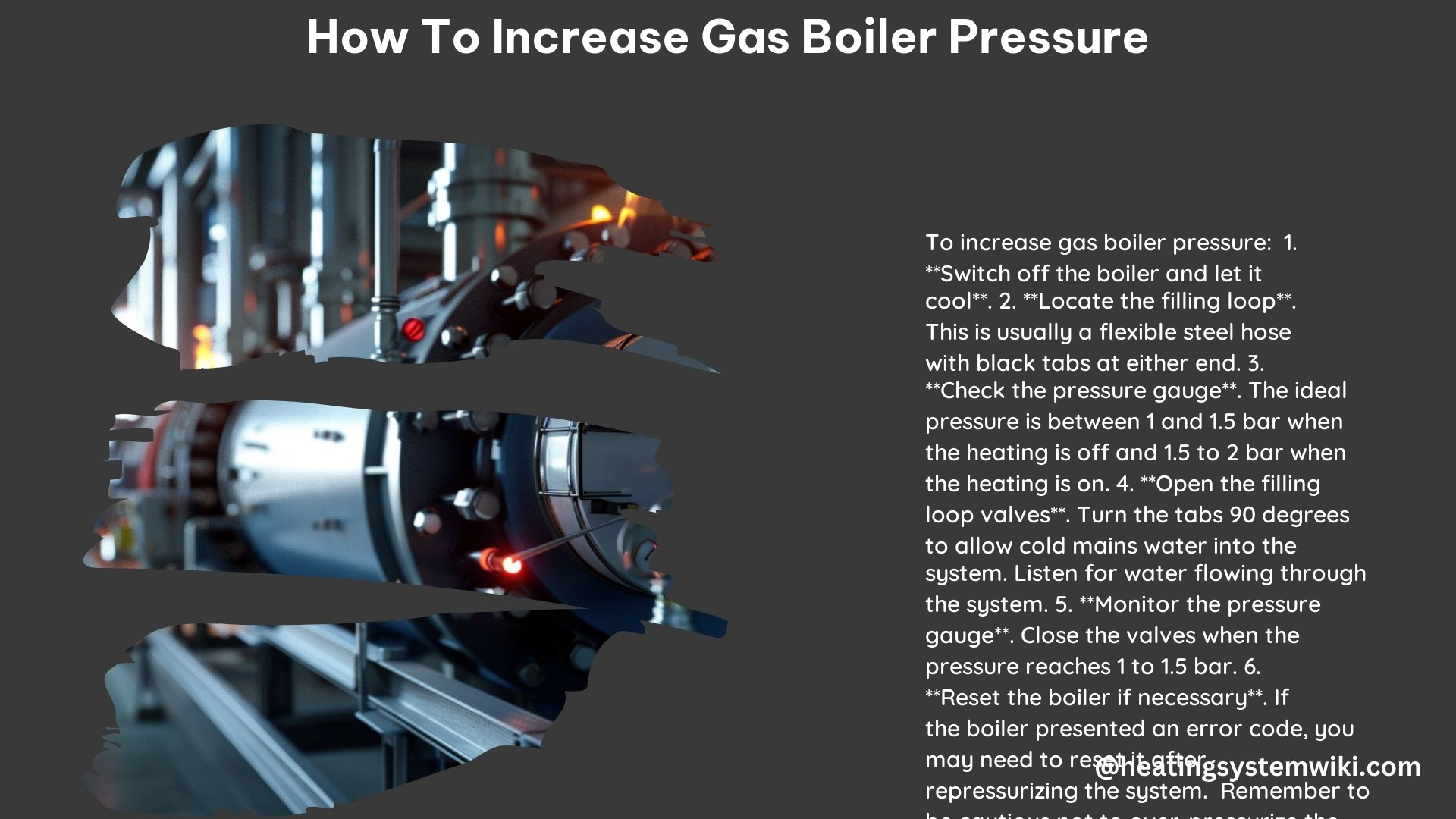Maintaining the proper pressure in your gas boiler is crucial for its efficient and safe operation. If the pressure drops below the recommended range, it can lead to various issues, such as reduced heating performance, system malfunctions, and even potential safety hazards. This comprehensive guide will walk you through the step-by-step process of increasing the gas boiler pressure, ensuring your heating system operates at its best.
Preparing the Boiler for Pressure Adjustment
-
Switch Off the Boiler: Before attempting to increase the pressure, it is essential to turn off the boiler and allow it to cool down completely. This will prevent any potential injuries or damage to the system.
-
Locate the Filling Loop: Identify the filling loop, which is typically a flexible steel hose with black tabs at either end. This loop is used to add water to the heating system.
-
Inspect the Pressure Gauge: Locate the pressure gauge, which is usually situated on the front or underside of the boiler. This gauge will display the current pressure within the system.
Increasing the Boiler Pressure

-
Open the Filling Loop Valves: Turn the black tabs on the filling loop 90 degrees, aligning them with the pipe. This will allow water to flow into the system, and you should hear the water moving through the pipes.
-
Monitor the Pressure Gauge: Closely observe the pressure gauge as you fill the system. Stop filling when the pressure reaches the desired level, which should be between 1 and 1.5 bar when the heating is turned off, and between 1.5 and 2 bar when the heating is turned on.
-
Close the Filling Loop Valves: Once the pressure has reached the optimal level, turn the black tabs 90 degrees across the pipe to shut off the filling loop.
Resetting the Boiler (if necessary)
-
Check for Error Codes: If the boiler displayed an error code due to low pressure, you may need to reset the boiler after repressurizing the system.
-
Refer to the Manufacturer’s Instructions: Consult the boiler’s user manual or manufacturer’s instructions for the specific steps required to reset the boiler.
Important Safety Considerations
-
Avoid Over-Pressurization: Be cautious not to overfill the system, as this can lead to damage to the boiler or other components. Exceeding the recommended pressure range can be dangerous.
-
Consult a Professional: If you are unsure about the process or have a more complex heating system, it is advisable to consult a professional heating engineer for assistance.
Technical Specifications
- Ideal Pressure Range: 1 to 1.5 bar (cold) and 1.5 to 2 bar (hot)
- Filling Loop: Flexible steel hose with black tabs at either end
- Pressure Gauge: Typically located on the front or underside of the boiler
References
- British Gas. (2014). How to Increase Boiler Pressure and Check Your Pressure Gauge. YouTube. https://www.youtube.com/watch?v=I3HgvV2mIqY
- Heating Help. (2017). How do I raise the psi in my boiler system? Heating Help: The Wall. https://forum.heatinghelp.com/discussion/163130/how-do-i-raise-the-psi-in-my-boiler-system
- John Owens Services. (2021). How to Increase or Reduce Boiler Pressure. https://johnowensservices.com/2021/08/how-to-increase-or-reduce-boiler-pressure/
By following the steps outlined in this comprehensive guide, you can effectively increase the pressure in your gas boiler, ensuring optimal performance and safety. Remember to always prioritize safety and, if in doubt, consult a professional heating engineer for assistance.
